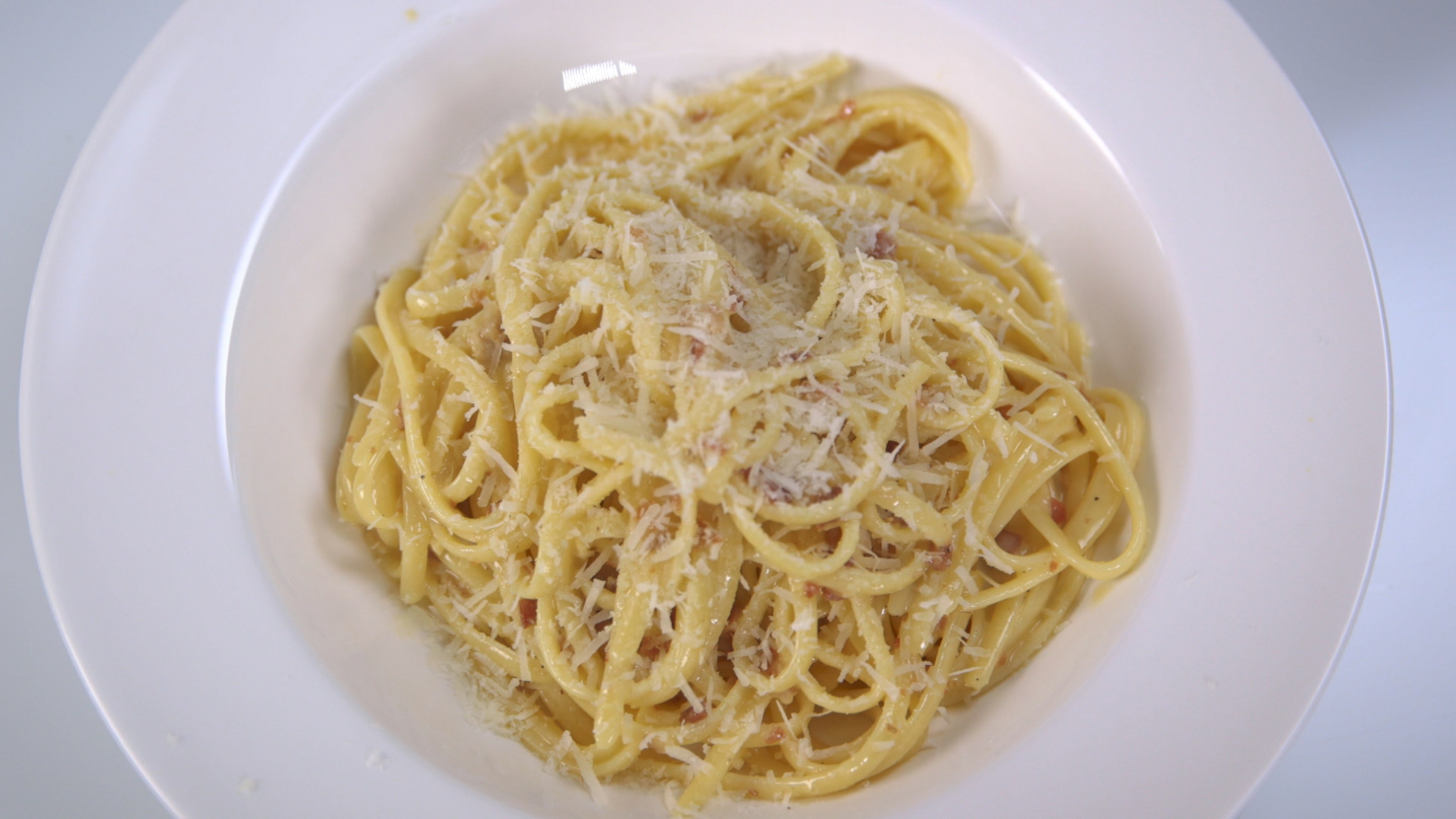Carbonara pasta is worldwide know as the typical roman recipe. Like Amatriciana (Matriciana) pasta is an icon of roman food, but its origins seems to be linked to american soldiers and a not so far 1944.
When you want to feel the taste and flavour the true roman food, your mind goes to some typical recipes like Saltimbocca, Amatriciana or Carbonara. If the first two are true typical roman food and their recipes are written in old recipes books (e.g. Ada Boni) carbonara was unknow until latest ’40 when, suddenly, became synonimous of roman food.
Here a complete recipe (in italian) of carbonara spaghetti
A theory on the birth of pasta alla carbonara says that the American soldiers, in Rome after the liberation of the city, used the food of their houses (bacon, eggs, cheese) to make a pasta that reminded the family flavors. In this way the carbonara pasta was born.
Another theory says that an American soldier (an officer) put an egg in a Gricia pasta obtaining the carbonara.
Regardless of which theory is true (maybe, a mix of the two) we are accepting that carbonara pasta – one of the iconic roman recipe – was not born as a roman recipe.
But Carbonara pasta is Rome deeply and delightfully.
Papa Rex – Traditional Restaurant in Rome since 1991 – Saint Peter – Vatican area



